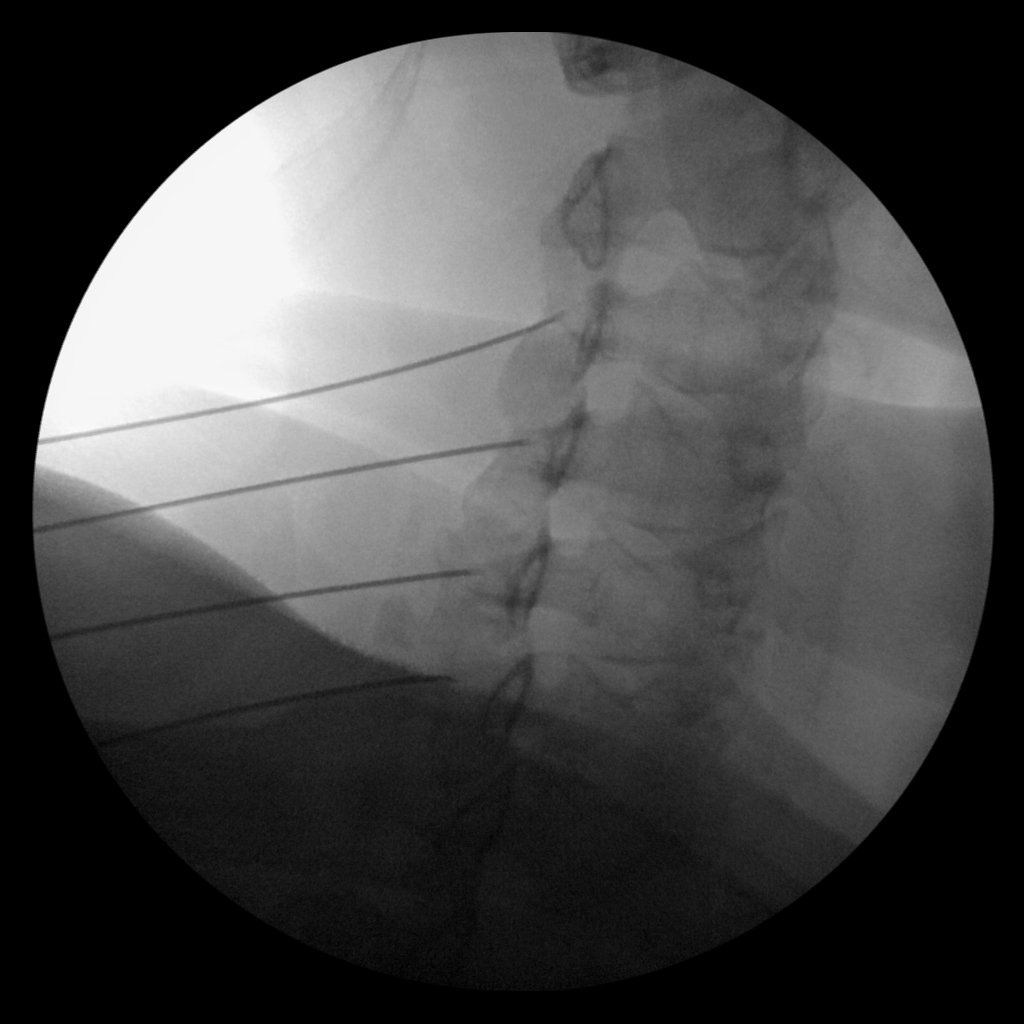Cervical Radiofrequency Denervation

Indications:
The number one cause of mechanical neck pain is arthritis in the joints of your neck (cervical facet syndrome). This condition is typically not fixed by surgery. This procedure is used to treat your pain coming from the arthritic joints in your neck and any type of whiplash type injury. The neck pain can radiate to your shoulders and upper back as well as be a cause of headaches. Prior to undergoing this procedure, you should have received temporary relief from your pain after undergoing cervical medial branch blocks
Contraindications/Reasons why you may not have your injection today:
- Bleeding disorders/low platelet counts
- Medications that thin your blood (please review this section)
- Current infection
- No driver
- Your symptoms have changed and/or improved
- Patient refusal
- Procedure not approved by your insurance
- Poorly controlled high blood pressure that may be giving you symptoms
- Allergies to the any of the medications that is being used
Potential side effects/risks of the procedure:
- Increased pain
- Numbness in upper extremities that is short lived
- Infection
- Bleeding
- Allergic reaction to medications used to clean your skin and/or medications injected
- Seizures
- Stroke
- Nerve and/or spinal cord injury
Procedure:
During the procedure, you will be lying on your back. If you need sedation, an IV can be placed to give you medication to help you relax. An x-ray machine is used to locate the specific level of the spine which is believed to be causing your pain based upon where you hurt in your neck. After your skin is cleaned with an antiseptic solution, normally betadine unless you are allergic, a series of x-rays will be taken to guide the needle placement. The skin is numbed with a local anesthetic which is typically the most painful part of the procedure as this medicine has a tendency to burn when it is injected. Another needle is then placed through the numb area of your skin and guided by the x-ray machine to the location of where the nerve sits. This is done at several different locations on your neck until all needles are in place. The needles are then connected to a radiofrequency generator and stimulated. This will likely produce an unpleasant twitching in your neck/upper back/shoulder region. If any pain/twitching travels past the elbow to your hand at any time during the procedure, please notify your physician. When satisfactory stimulation is achieved, additional local anesthetic is placed on the nerves. Finally, lesioning of these nerves begins. You may experience increased pressure/pain in your neck/upper back region which is normal. However, if at any time the pain is too intense, please notify your physician. After the lesioning is complete, the needles are removed and the procedure is completed.
Typical length of the procedure:
15 minutes. Expect to be at the clinic no more than 20 minutes after you have been checked in by the medical assistant into the preoperative area. If this is your first injection and/or you have had sedation, you will likely be at the clinic for at least one hour. Please plan accordingly.
How long do you expect pain relief:
On average, patients will gain at least 50% pain relief for 6 months. This relief may not be immediate, and can take several weeks before adequate pain relief is achieved. If the pain returns after this time frame, the procedure can be repeated.